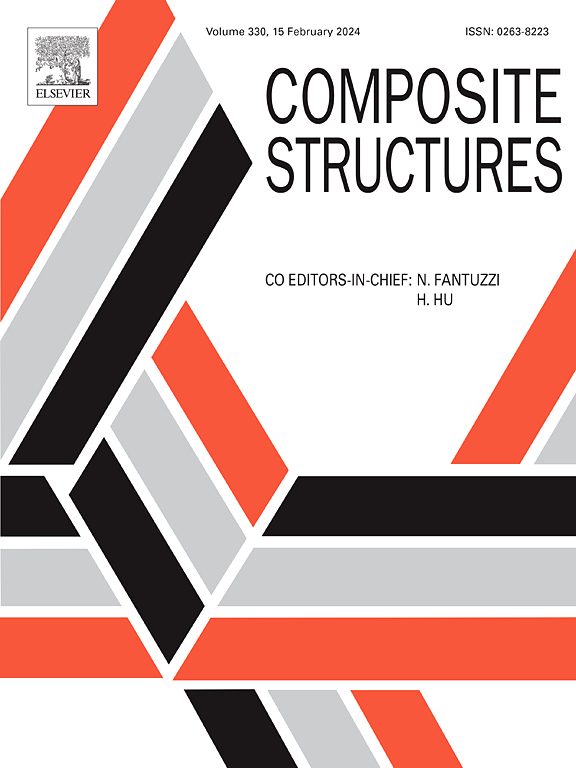Inverse design of compression-torsion mechanical metamaterials with suppressed Poisson effect under large deformation
IF 6.3
2区 材料科学
Q1 MATERIALS SCIENCE, COMPOSITES
引用次数: 0
Abstract
The intrinsic coupling of torsion (shear) properties with the Poisson effect is typical of the chiral materials subjected to compressive loads. Pure torsion functionalities with suppressed Poisson effect are of great interest for innovative actuators capable of switching displacement modes in confined or specialized assembly spaces. However, both the torsion property and Poisson effect may be dependent on the strain, which makes it challenging to design the constant torsion functionality with zero Poisson effect under large deformation. This study develops an inverse design method of a compression-torsion mechanical metamaterial with a suppressed Poisson effect. In the method, a nonlinear representative volume element model is built to characterize the coupling deformation behavior under large compression strain. Then, a topology optimization model is formulated to provide a high-dimensional design space, and it maintains high computational efficiency via the representative volume element model. Freeform microstructure topologies with tailored torsion functions and near-zero Poisson’s ratios are generated by this topology optimization formulation. The performance of the designed microstructures is validated at both the microscale and macroscale. Furthermore, experiments show the torsion angle of the metamaterial cylindrical shell is tunable via local confinement, overcoming the difficulty of reconstructing the metamaterial to change the torsion functionality.
大变形条件下抑制泊松效应的压扭力学超材料反设计
扭转(剪切)特性与泊松效应的内在耦合是手性材料在压缩载荷作用下的典型特性。具有抑制泊松效应的纯扭转功能对于能够在受限或专门的装配空间中切换位移模式的创新执行器非常感兴趣。然而,扭转性能和泊松效应都可能取决于应变,这使得在大变形下设计零泊松效应的恒定扭转功能具有挑战性。本文提出了一种具有抑制泊松效应的压缩-扭转机械超材料的反设计方法。该方法建立了具有代表性的非线性体元模型来表征大压缩应变下的耦合变形行为。然后,建立拓扑优化模型,提供高维设计空间,并通过具有代表性的体元模型保持较高的计算效率。该拓扑优化公式可生成具有定制扭转函数和接近零泊松比的自由形状微观结构拓扑。在微观尺度和宏观尺度上验证了所设计微结构的性能。此外,实验表明,通过局部约束可以调节超材料圆柱壳的扭转角,克服了重建超材料以改变扭转功能的困难。
本文章由计算机程序翻译,如有差异,请以英文原文为准。
求助全文
约1分钟内获得全文
求助全文
来源期刊

Composite Structures
工程技术-材料科学:复合
CiteScore
12.00
自引率
12.70%
发文量
1246
审稿时长
78 days
期刊介绍:
The past few decades have seen outstanding advances in the use of composite materials in structural applications. There can be little doubt that, within engineering circles, composites have revolutionised traditional design concepts and made possible an unparalleled range of new and exciting possibilities as viable materials for construction. Composite Structures, an International Journal, disseminates knowledge between users, manufacturers, designers and researchers involved in structures or structural components manufactured using composite materials.
The journal publishes papers which contribute to knowledge in the use of composite materials in engineering structures. Papers deal with design, research and development studies, experimental investigations, theoretical analysis and fabrication techniques relevant to the application of composites in load-bearing components for assemblies, ranging from individual components such as plates and shells to complete composite structures.
 求助内容:
求助内容: 应助结果提醒方式:
应助结果提醒方式:


